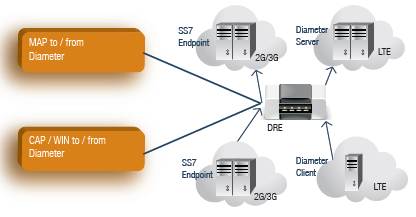By John Giere*, CEO and President,
Openwave Mobility
Mobile devices guarantee that this will be the most watched World Cup ever, but low video quality and data-charge fears will let down a third of Europe’s World Cup fans.
How will you be watching the Brazil World Cup? That’s the question put to over 2200 football fans across three of Europe’s smartphone-savvy, soccer-loving nations: Spain (current champions), Germany (three times world champions) and the UK (well….aspiring champions!). The independent survey was commissioned from
Censuswide and took place in May 2014. The findings make very interesting reading. Unsurprisingly, more people than ever want to watch the action on a mobile device. But fears of bill shock and appalling video quality are keeping some football fans firmly glued to their TV screens.
Is Spain set to retain the World Cup?
If the World Cup was decided on mobile usage – Spain would be crowned World Champions yet again! Why? Because 68% of Spanish mobile subscribers will watch at least part of the action on their mobile device. That’s three times the number of people watching on mobile in the UK! Only 1 in 4 Brits (21.6%) will turn to a mobile to watch the Brazilian tournament. Even in Germany, just under half (39%) of their fans are opting to watch the matches on their mobile. To put that another way, Spain’s mobile subscribers are clearly reflecting their country’s chances of lifting the cup again!
Was that a goal?
Imagine this. It’s the knock out stages and Brazil is playing Argentina. It’s 0-0 into the 85th minute and Messi closes in on the goal and kicks a brilliant curler... and …. and the video on your mobile starts to buffer. A genuine fear of missing those crucial moments is putting off subscribers.
Amongst the Europeans, German supporters complained the most about poor video quality. In fact almost half (44.3%) of Germans who would like to watch the 2014 World Cup on their mobile device are worried about appalling video quality. In the UK, that figure is 1 in 3 (27.4%) and 1 in 4 (23%) Spanish fans are worried about poor quality video.
And if poor video quality was not enough, European football fans are also complaining about bill shock.
Who’s afraid of the bill?
No one wants to pay more than they anticipated paying, and that’s keeping some footballs fans well away from their mobile devices. Of the people who would like to watch the games on mobile, a similar number of Brits (30.04%) and Germans (31.8%) fear bill shock. In Spain that figure goes down slightly to 25.40%.
Interestingly, despite fears over unknown data charges, Europe’s smartphone savvy football fans are willing to pay a fixed subscription fee to watch the matches in HD quality. 43% of Spanish, 34% of German and 21% of British subscribers were all happy to pay a fixed one-off fee, i.e. a video-service subscription fee, to their mobile operator for HD quality World Cup footage. This idea of Application Based Pricing has been around for a while now but so far only a few operators have cottoned on to its full potential.

And how much were they willing to pay? In the UK and Germany it was £5 (around US$8). However subscribers in Spain were willing to almost double that and fork out €10 (around US$14). All the signs that Spain’s mobile subscribers have high expectations from this year’s event! The serious point is that clearly consumers are happy to pay a fee for a service that delivers quality and gives them a great user experience. It’s more important than ever for mobile operators to meet the insatiable appetite for mobile video and monetize their data. Application Based Pricing is one of the ways to do just that.
The rise and rise (and rise) of mobile video
We also looked at the growth in mobile video from the 2010 South Africa World Cup. Across Europe we saw 2 to 4 times as many people wanting to view at least part of the 2014 tournament on mobile. This is not just down to an increase in smartphone penetration – that was already high in 2010. Rather, it clearly demonstrates the increasing penetration of mobile video as an activity people understand, can engage with and enjoy. Mobile operators must capitalize on the exponential demand for video. A major event like the World Cup does not only generate instantaneous revenues, it can also change habits as people who were not mobile video users realise that this is a great way to keep up with the action. It’s now more important than ever for mobile operators to intelligently monetize their data.
_________

*John Giere has over 20 years of wireless industry management experience in sales, product management, marketing and business development. Prior to his role as President and CEO of Openwave Mobility, John served as GM of the mediation business unit for Openwave Systems. Before Openwave Systems, John served as CMO for Alcatel-Lucent and CMO for Lucent Technologies. Before joining Lucent in 2003, John worked for Ericsson in various strategic marketing and business development roles. John currently serves on the Board of Sonim Technologies. He holds an MBA from the University of Maryland and a Bachelor of Science degree from Georgetown University.
 Comverse announced that "Play (P4) has selected the Comverse ONE Converged Billing & Active Customer Management solution to support expansion of services and functionalities for its advanced 4G/LTE network serving a rapidly growing subscriber base.
Comverse announced that "Play (P4) has selected the Comverse ONE Converged Billing & Active Customer Management solution to support expansion of services and functionalities for its advanced 4G/LTE network serving a rapidly growing subscriber base.










































